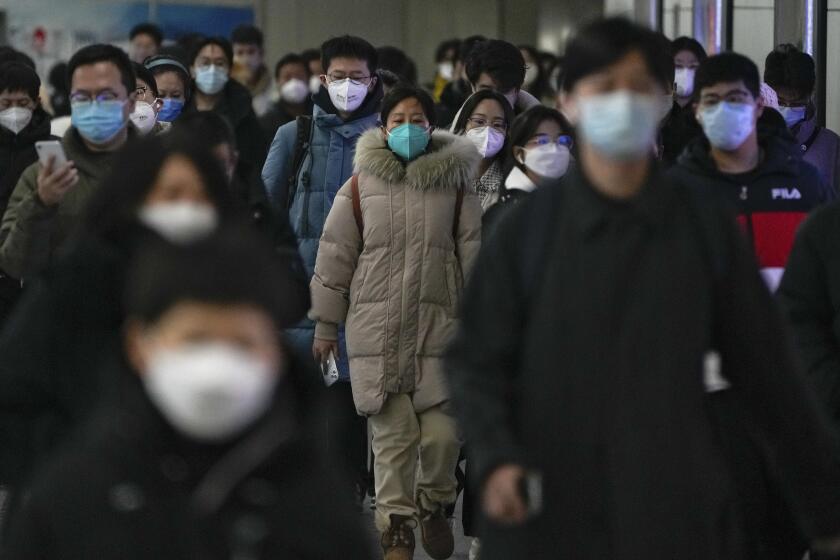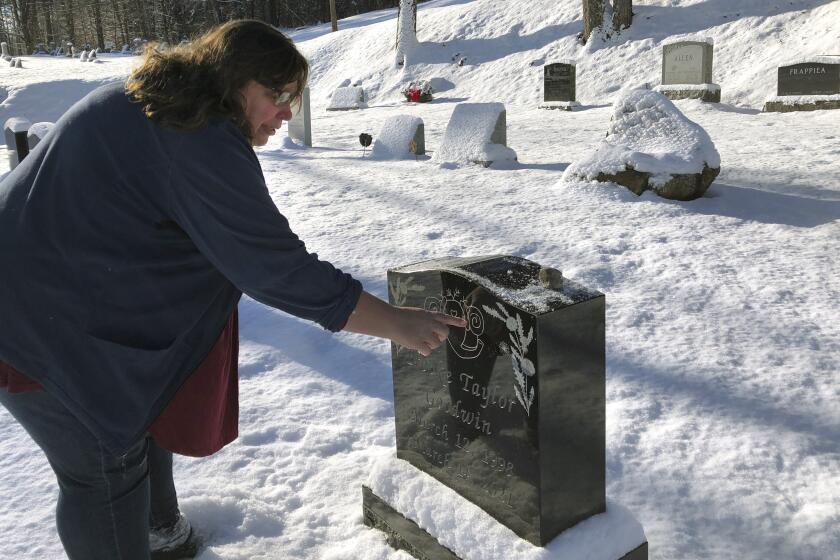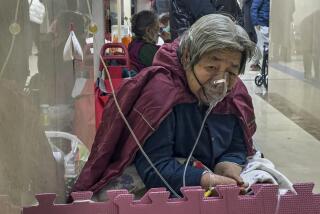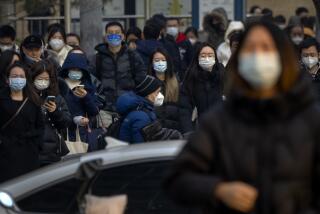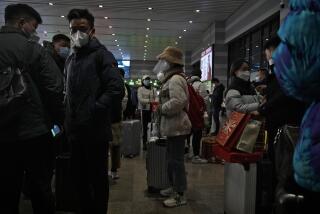‘A very, very hard road ahead’: COVID cases spiral in China as restrictions ease
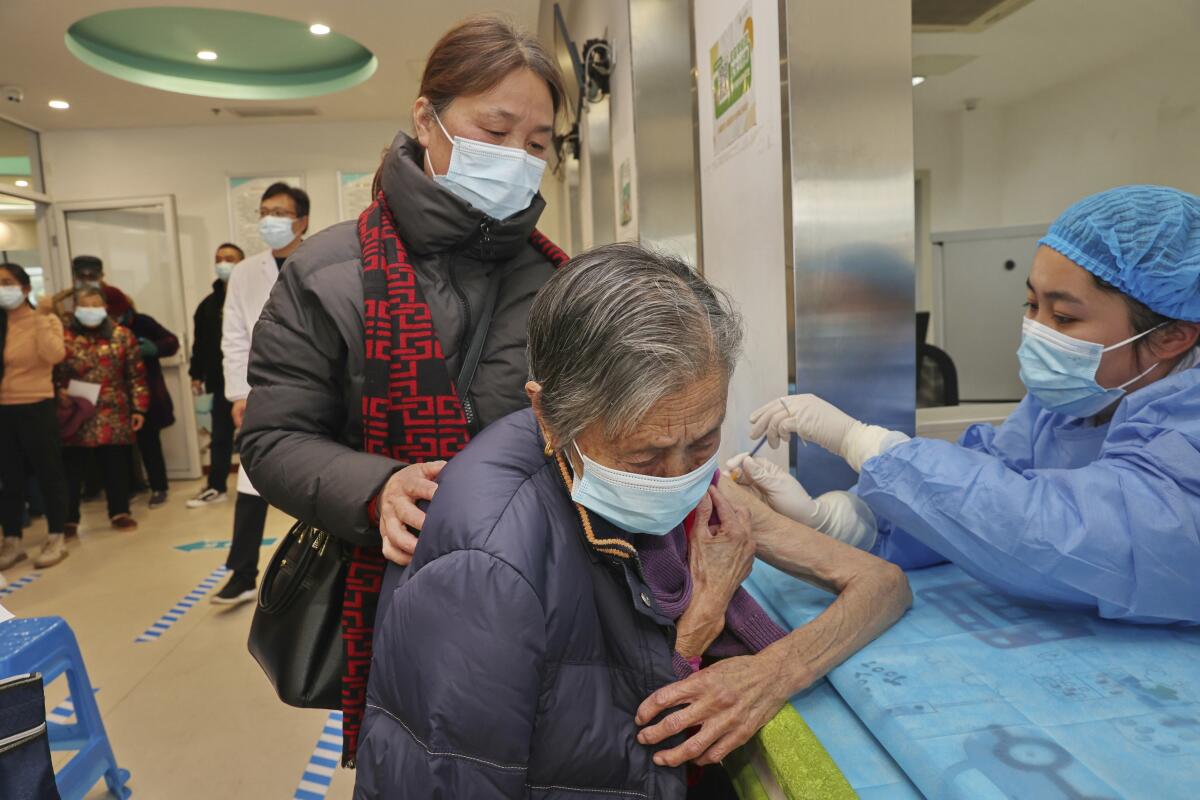
BAZHOU, China — Nearly three years after it was first identified in China, the coronavirus is now spreading through the vast country. Experts predict difficult months ahead for its 1.4 billion people.
China’s unyielding “zero-COVID” approach, which aimed to isolate all infected people, bought it years to prepare for the disease. But an abrupt reopening of society, which was announced without warning Dec. 7 in the wake of anti-lockdown protests, has caught the nation under-vaccinated and short on hospital capacity.
Experts have forecast 1 million to 2 million COVID-19 deaths next year. Predicting deaths has proved tricky throughout the pandemic, since it is influenced by varied factors and China presents an especially complicated case because of opaque information-sharing.
It’s not clear exactly how large the current outbreak is, as China has reduced testing and stopped reporting most mild cases. But in cities and towns around Baoding and Langfang, in Hebei province, an area that was among the first to face an unchecked outbreak, Associated Press reporters saw hospital intensive care units overwhelmed by patients and ambulances being turned away.
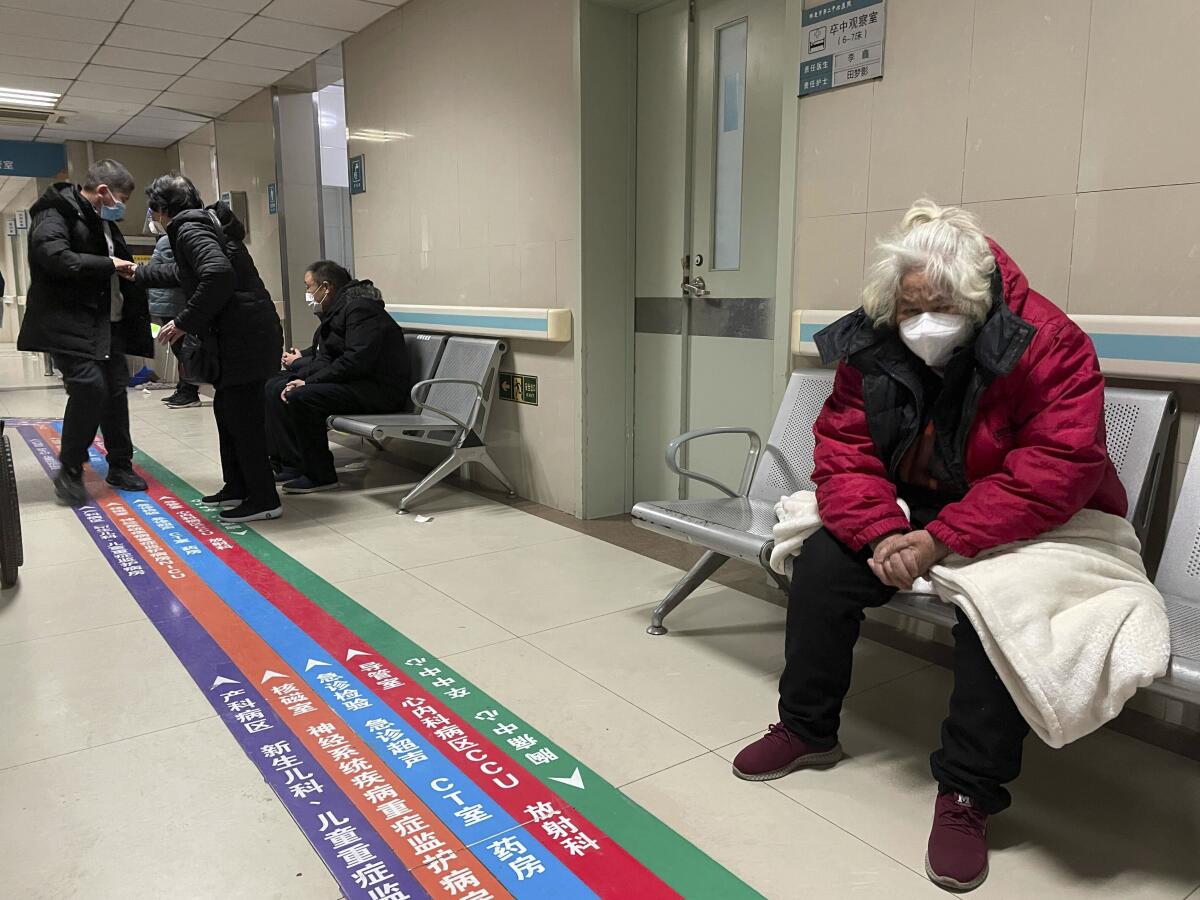
Across the country, widespread reports of absences from work, shortages of fever-reducing medicine and staff working overtime at crematoria suggest that the virus is widespread.
China belongs to a small club of countries that managed to stop most domestic transmission of the coronavirus in 2020, but is the last to end restrictions. Experiences of ending vary: Singapore and New Zealand achieved high vaccination rates and bolstered medical systems during restrictions and reopened relatively smoothly. Hong Kong, where the Omicron variant spread while many elderly people were unvaccinated, suffered a disruptive COVID-19 wave in 2022. Nearly 11,000 people died of the illness this year in the city of 7.4 million, with 95% of them older than 60, according to Hong Kong’s department of health. Data showed a 15% COVID-19 fatality rate for unvaccinated people over 80, said Jin Dong-yan, a virology expert at Hong Kong University.
Mainland China has higher vaccination rates than Hong Kong did at the time of its Omicron outbreak, but many people are vulnerable to infection, especially elderly people.
Chinese cities are witnessing a wave of COVID-19 cases, with concerns growing that the government may be hiding the true toll of the virus.
The country has exclusively used domestically made vaccines, which rely on older technology than the mRNA vaccines, such as the Pfizer and Moderna shots, used elsewhere, which have shown the best protection against infection.
A study conducted in Hong Kong, which has administered both an mRNA vaccine and Sinovac’s CoronaVac, suggested that CoronaVac requires a third shot to provide comparable protection, especially for older people. Most people vaccinated in China have received either CoronaVac or a similar vaccine produced by SinoPharm, but the country has administered at least five other vaccines.
While China counts 90% of its population vaccinated, only around 60% have received a booster. Older people are especially likely to have not had a booster. More than 9 million people over 80 have not had the third shot, according to China’s official Xinhua News Agency.
Unlike other countries, China prioritized vaccinating the more mobile young to prevent the coronavirus from spreading, said Ray Yip, the founding director of the U.S. Centers for Disease Control and Prevention office in China. A campaign targeting those older than 60 started in December, but it is unclear how successful it has been.
The experience of human rights lawyer Wang Yu shows that China’s cellphone health apps can become another tool of social and political control.
They “did not pay enough attention to assure everyone gets full vaccine protection,” Yip said. “How well do they perform this particular catch-up effort might determine some of the outcome.”
Around Baoding and Langfang, hospitals have run out of intensive care beds and staff as severe COVID-19 cases surge. Patients lay on the floor, while others drove from hospital to hospital searching for beds for relatives Wednesday.
The National Health Commission said China had 10 intensive care beds for every 100,000 people Dec. 9, a total of 138,000 beds, up from 4 for every 100,000 people Nov. 22. That means the reported number of beds more than doubled in just under three weeks. But this number “might be wrong,” warned Yu Changping, a doctor at the Department of Respiratory Medicine at People’s Hospital of Wuhan University. “It is impossible that the number could have jumped sharply within such a short time.”
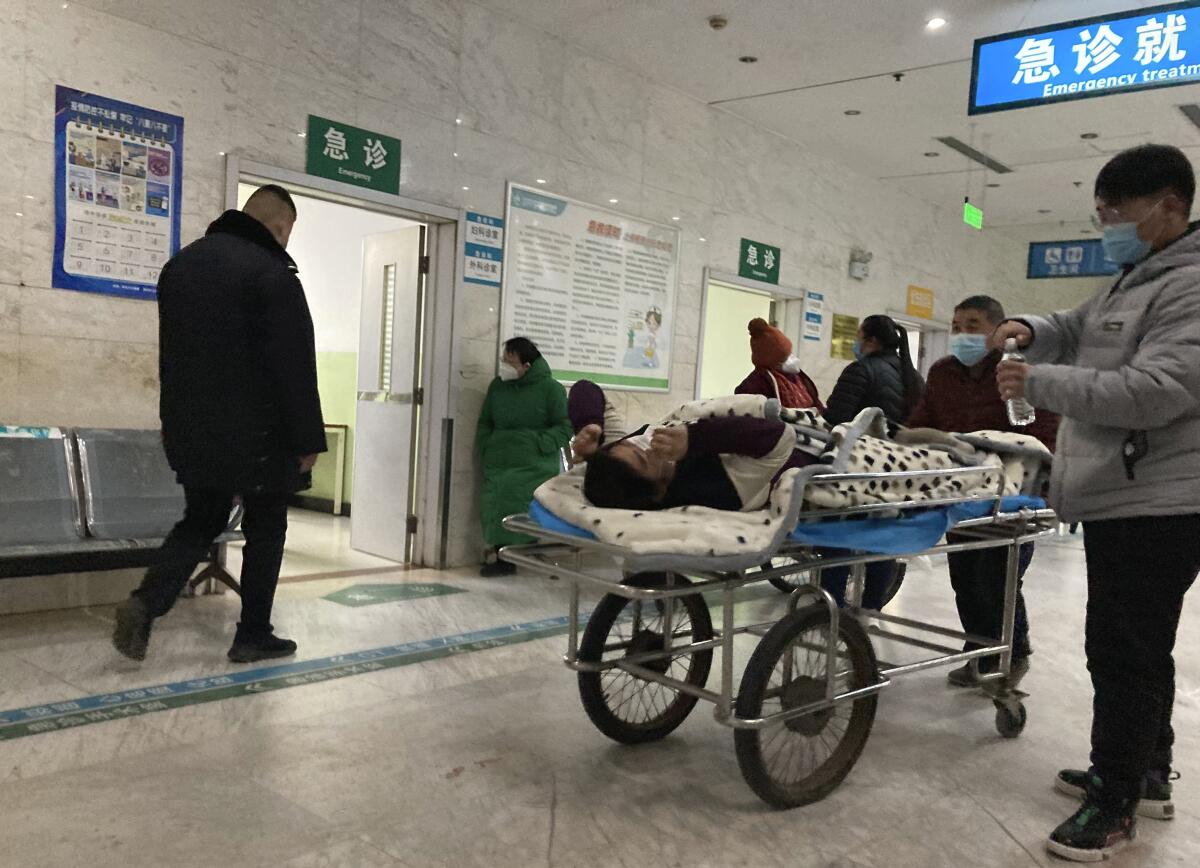
Even taken at face value, the increase in ICU beds doesn’t mean the health system is prepared for a surge in cases because the pressure point, as seen globally, is often the availability of specialized doctors and nurses who can treat patients who need intensive care. China has only 80,050 doctors and 220,000 nurses for its critical care facilities, and an additional 177,700 nurses who the National Health Commission says could potentially work in those units.
To try to protect its health system, Beijing has converted temporary hospitals and centralized quarantine facilities to increase the number of fever clinics from 94 to 1,263. But rural areas may suffer, as the vast majority of China’s ICU beds are in its cities.
China approved Pfizer’s drug for COVID-19, Paxlovid, earlier this year, as well as two domestically developed therapies: an antiviral used for AIDS made by Genuine Biotech that has been repurposed for COVID-19 and a cocktail of virus-blocking antibodies made by BriiBio. But it is unclear how widely available these drugs are.
U.S. life expectancy, already declining since the onset of the pandemic, fell further in 2021, according to the CDC’s final accounting of death certificates.
Just how bad the situation will get is hard to predict. The Institute for Health Metrics and Evaluation at the University of Washington in Seattle forecasts that deaths could reach 1 million by the end of 2023 if the coronavirus spreads unchecked. But Ali Mokdad, a professor of health metrics sciences at the institute, said the Chinese government would likely be able to reduce this toll with renewed social-distancing measures.
Another study, by Hong Kong University, also predicts nearly 1 million deaths in a scenario in which the coronavirus spreads throughout the country and authorities can’t provide vaccine boosters and antiviral treatments. Bill Hanage at Harvard’s School of Public Health estimated 2 million deaths in a Dec. 14 call with reporters.
“China has got a very, very hard road ahead of it in the coming months,” Hanage said. “But in the absence of vaccination, it would be much, much worse.”
More to Read
Sign up for Essential California
The most important California stories and recommendations in your inbox every morning.
You may occasionally receive promotional content from the Los Angeles Times.
